Cheers to South African Champagne & Its Undercover Name
(Gerry Furth-Sides, bottle photos courtesy of WOSA, Wines of South Africa) A celebration marking the anniversary of Nelson Mandela’s death every December 5th calls for a special wine. We were introduced at a special luncheon this year to to the excellent ‘Cap Classique’, the South African name for traditional method sparkling wines. Their sparkle is infused by a second fermentation in the bottle, much like Champagne. This blend of Pinot Noir and Chardonnay is a wonderful aperitif, with fresh notes of raspberries, red apple, and rose petals is as sunny as the skies of this brightly lit nation. This is a Cap Classique, the South African equivalent of Champagne, tactfully named so as not to offend the French (much the same as spanish CAVA. It’s 52% Chardonnay and 48% Pinot Noir and spent 28 months on the lees. //www.wosa.co.za
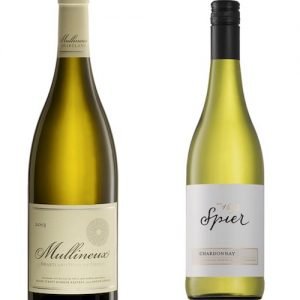
Chenin Blanc, also known as Steen, is the local the grape to count on for making popular, top quality dry and sweet wines. Chenin Blanc is the most planted grape in South Africa, totaling more acreage than anywhere else in the world.
And that’s only one of the many stories about the still relatively unknown South African wines, which offer impressively good value, and feature styles and tastes that are food-friendly, blending elegance and power. But they are gaining popularity. Even our knowledgable wine advisor at Trader Joe’s flatly stated, “We’ve never had any South African wine here that wasn’t excellent.” This is great news because centuries-old South African wines have only been promoted for the past decade or so due to a new generation of winemakers. (and it is interesting that Black South Africans only go into the European-dominated winemaking industry as a “hobby” because it does not pay as well as other professions!)
Jim Clarke, marketing manager for Wines of South Africa is as passionate about the wines as the producers are serious about its winemaking. One example is Wines of Origin, in which producers voluntarily follow a structured format in order to label their bottles. it includes a taste test, a minimum amount of the primary grape and assurance that every single grape came solely from the one vineyard producer.
Most South African wine production is located in the southwestern part of the country, called the Western Cape throughout its long history. South Africa has been producing wine since the first vines were planted in the 17th century, brought by the Dutch governors of Cape Colony. At one time, the sweet wine of Constantia was the most prized in the world. The most important South African wine regions are around the two cities of Stellenbosch and Paarl. A range of wine style include Chardonnay and Sauvignon, plus Chenin Blanc, also known as Steen. Pinotage (a cross between Pinot Noir and Cinsaultis) is South Africa’s is a native red grape. Shiraz, Cabernet Sauvignon, Merlot and Bordeaux-style red blends are also among the country’s top reds.

South African vineyards were once dominated by white grape varieties but the predominantly red new plantings in the last decade more than evened it out and now both are being planted.
Wines in production within the Western Cape are categorized into large geographical areas, then broken down into regions, districts, and wards. The Cape wine growing areas, situated in the narrow viticultural zone of the southern hemisphere, mostly have a Mediterranean climate while mountain slopes and valleys form the ideal habitat for the wine grape Vitis vinifera. Long, sun-drenched summers and mild, wet winters contribute to the ideal conditions for viticulture at the Cape.
Jim Clarke paired Pinot Noir with the main courses to prove that “it’s a very flexible food wine.”
A range of wine styles are made, from big, bold reds to full-bodied Chardonnay and spring Sauvignon Blanc. And there are other surprises besides the brut. Our meal ended with such a surprise in the form of Klein Constantia Vin de Constance 2014, a historic sweet white wine. The surprise? In the 1800s this South African wine was more popular in France than Sauternes.

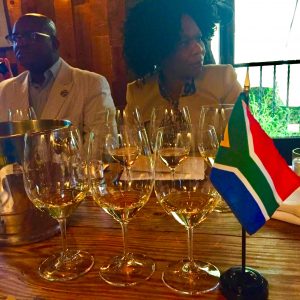
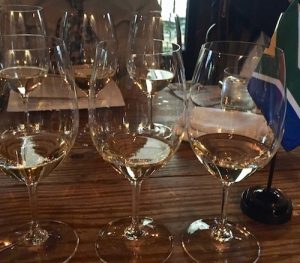
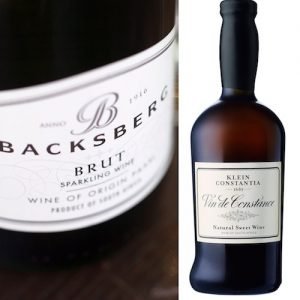

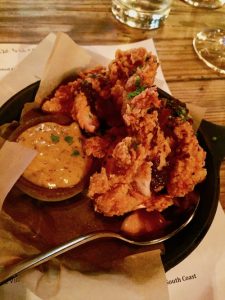
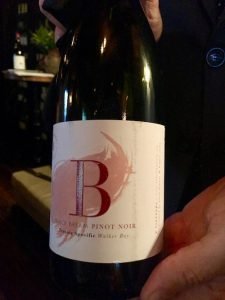
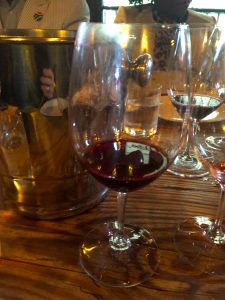
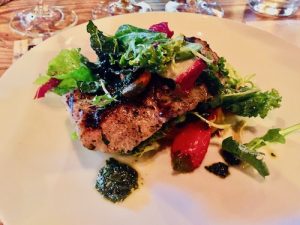
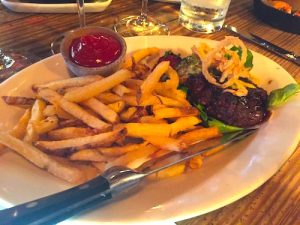
 Gerry Furth-Sides
Gerry Furth-Sides  Barbara Hansen
Barbara Hansen  Chef-owner Alain Cohen
Chef-owner Alain Cohen  Roberta Deen
Roberta Deen  Jose Martinez
Jose Martinez  Nivedita Basu
Nivedita Basu